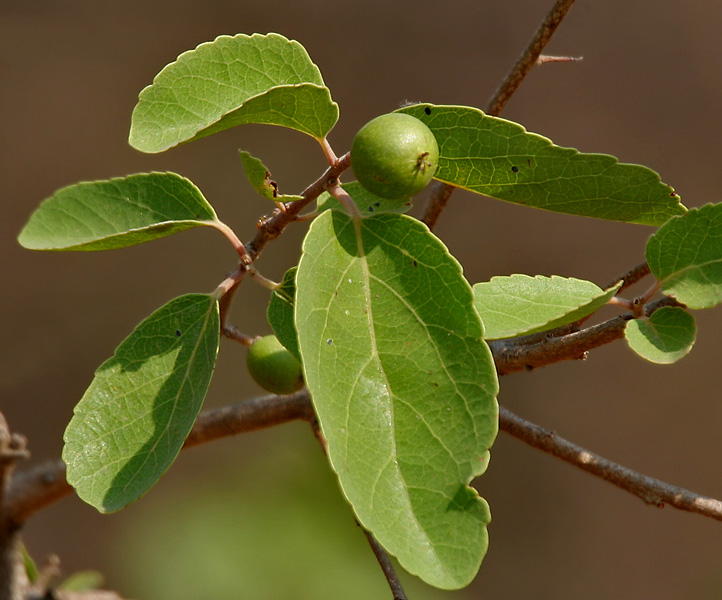|
Berberidopsidaceae
Berberidopsidaceae is a family of flowering plants. Such a family has only recently been recognized by more than a few taxonomists: the plants involved have often been treated as belonging to family Flacourtiaceae. The APG II system, of 2003 (unchanged from the APG system, of 1998), does recognize this family, unplaced as to order and merely assigned to the clade core eudicots. The family consists of one or two genera, '' Berberidopsis'', with two species (''B. beckleri'' and ''B. corallina'') and '' Streptothamnus'', with a single species (''S. moorei''). However, APG II mentions the possibility of recognizing an order Berberidopsidales, which would comprise the two families Aextoxicaceae and Berberidopsidaceae. The APG III system The APG III system of flowering plant classification is the third version of a modern, mostly molecular-based, system of plant taxonomy being developed by the Angiosperm Phylogeny Group (APG). Published in 2009, it was superseded in 2016 by a fur . ... [...More Info...] [...Related Items...] OR: [Wikipedia] [Google] [Baidu] |
Streptothamnus
''Streptothamnus'' is a genus of flowering plants in the family Berberidopsidaceae Berberidopsidaceae is a family of flowering plants. Such a family has only recently been recognized by more than a few taxonomists: the plants involved have often been treated as belonging to family Flacourtiaceae. The APG II system, of 2003 (un .... It has only one currently accepted species, ''Streptothamnus moorei'', native to northern New South Wales and southeast Queensland, Australia. It is a scandent shrub found in forested montane areas. References {{Taxonbar, from1=Q17487650, from2=Q17243619 Monotypic eudicot genera Berberidopsidales Taxa named by Ferdinand von Mueller ... [...More Info...] [...Related Items...] OR: [Wikipedia] [Google] [Baidu] |
Berberidopsidales
Berberidopsidales is an order of Southern Hemisphere woody flowering plants. The name is newly accepted in the APG III system of plant taxonomy. APG II system, of 2003, mentions the possibility of recognizing the order, as comprising the families Berberidopsidaceae and Aextoxicaceae. However, APG II left the families unplaced as to order, assigning them to the clade core eudicots. The APG III system of 2009 formally recognized the order. The family Aextoxicaceae is a monotypic family native to Chile; Berberidopsidaceae is a family of 2 genera and 3 species native to Chile and eastern Australia Australia, officially the Commonwealth of Australia, is a Sovereign state, sovereign country comprising the mainland of the Australia (continent), Australian continent, the island of Tasmania, and numerous List of islands of Australia, sma .... References Angiosperm orders {{eudicot-stub ... [...More Info...] [...Related Items...] OR: [Wikipedia] [Google] [Baidu] |
Flacourtiaceae
The Flacourtiaceae is a defunct family of flowering plants whose former members have been scattered to various families, mostly to the Achariaceae and Salicaceae. It was so vaguely defined that hardly anything seemed out of place there and it became a dumping ground for odd and anomalous genera, gradually making the family even more heterogeneous. In 1975, Hermann Sleumer noted that "Flacourtiaceae as a family is a fiction; only the tribes are homogeneous." In Cronquist's classification, the Flacourtiaceae included 79–89 genera and 800–1000 species. Of these, many, including the type genus ''Flacourtia'', have now been transferred to the Salicaceae in the molecular phylogeny-based classification, known as the APG IV system, established by the Angiosperm Phylogeny Group. In the list below, the Salicaceae are circumscribed broadly. Some taxonomists further divide the Salicaceae ''sensu lato ''Sensu'' is a Latin word meaning "in the sense of". It is used in a number of fields ... [...More Info...] [...Related Items...] OR: [Wikipedia] [Google] [Baidu] |
Berberidopsis
''Berberidopsis'' is a genus of flowering plants in the small family Berberidopsidaceae. Species The genus contains two species: * '' Berberidopsis beckleri'' - montane tape vine, of Australia. * '' Berberidopsis corallina'' - coral plant of Chile, a threatened woody vine, locally known as ''voqui fuco''. Its stems are used in traditional basketry by southern Mapuche The Mapuche ( (Mapuche & Spanish: )) are a group of indigenous inhabitants of south-central Chile and southwestern Argentina, including parts of Patagonia. The collective term refers to a wide-ranging ethnicity composed of various groups who s ... people. References External links * Pictures o''Berberidopsis corallina''in Chile. Berberidopsidales Eudicot genera Taxa named by Joseph Dalton Hooker {{eudicot-stub ... [...More Info...] [...Related Items...] OR: [Wikipedia] [Google] [Baidu] |
APG II System
The APG II system (Angiosperm Phylogeny Group II system) of plant classification is the second, now obsolete, version of a modern, mostly molecular-based, system of plant taxonomy that was published in April 2003 by the Angiosperm Phylogeny Group.Angiosperm Phylogeny Group (2003)An update of the Angiosperm Phylogeny Group classification for the orders and families of flowering plants: APG II.''Botanical Journal of the Linnean Society'' 141(4): 399-436. doi: 10.1046/j.1095-8339.2003.t01-1-00158.x It was a revision of the first APG system, published in 1998, and was superseded in 2009 by a further revision, the APG III system. History APG II was published as: *Angiosperm Phylogeny Group (2003). "An update of the Angiosperm Phylogeny Group classification for the orders and families of flowering plants: APG II". ''Botanical Journal of the Linnean Society'' 141(4): 399-436. (Available onlineAbstractFull text (HTML)Full text (PDF) doi: 10.1046/j.1095-8339.2003.t01-1-00158.x) Each o ... [...More Info...] [...Related Items...] OR: [Wikipedia] [Google] [Baidu] |
APG System
The APG system (Angiosperm Phylogeny Group system) of plant classification is the first version of a modern, mostly molecular-based, system of plant taxonomy. Published in 1998 by the Angiosperm Phylogeny Group, it was replaced by the improved APG II in 2003, APG III system in 2009 and APG IV system in 2016. History The original APG system is unusual in being based, not on total evidence, but on the cladistic analysis of the DNA sequences of three genes, two chloroplast genes and one gene coding for ribosomes. Although based on molecular evidence only, its constituent groups prove to be supported by other evidence as well, for example pollen morphology supports the split between the eudicots and the rest of the former dicotyledons. The system is rather controversial in its decisions at the family level, splitting a number of long-established families and submerging some other families. It also is unusual in not using botanical names above the level of order, that is, an orde ... [...More Info...] [...Related Items...] OR: [Wikipedia] [Google] [Baidu] |
APG III System
The APG III system of flowering plant classification is the third version of a modern, mostly molecular-based, system of plant taxonomy being developed by the Angiosperm Phylogeny Group (APG). Published in 2009, it was superseded in 2016 by a further revision, the APG IV system. Along with the publication outlining the new system, there were two accompanying publications in the same issue of the Botanical Journal of the Linnean Society: * The first, by Chase & Reveal, was a formal phylogenetic classification of all land plants (embryophytes), compatible with the APG III classification. As the APG have chosen to eschew ranks above order, this paper was meant to fit the system into the existing Linnaean hierarchy for those that prefer such a classification. The result was that all land plants were placed in the class Equisetopsida, which was then divided into 16 subclasses and a multitude of superorders. * The second, by Haston ''et al.'', was a linear sequence of families followi ... [...More Info...] [...Related Items...] OR: [Wikipedia] [Google] [Baidu] |
Armen Takhtajan
Armen Leonovich Takhtajan or Takhtajian ( hy, Արմեն Լևոնի Թախտաջյան; russian: Армен Леонович Тахтаджян; surname also transliterated Takhtadjan, Takhtadzhi︠a︡n or Takhtadzhian, pronounced takh-tuh-JAHN; 10 June 1910 – 13 November 2009), was a Soviet-Armenian botanist, one of the most important figures in 20th century plant evolution and systematics and biogeography. His other interests included morphology of flowering plants, paleobotany, and the flora of the Caucasus. He was one of the most influential taxonomists of the latter twentieth century. Life Family Takhtajan was born in Shushi, Russian Empire, present-day disputed Nagorno-Karabakh, on 10 June 1910, to a family of Armenian intellectuals. His grandfather Meliksan Takhtadzhyan Petrovich had been born in Trabzon, Ottoman Empire and was educated in Italy, on the island of San Lazzaro degli Armeni, an Armenian enclave, spoke many languages and worked as a journalist. He ... [...More Info...] [...Related Items...] OR: [Wikipedia] [Google] [Baidu] |
Family (biology)
Family ( la, familia, plural ') is one of the eight major hierarchical taxonomic ranks in Linnaean taxonomy. It is classified between order and genus. A family may be divided into subfamilies, which are intermediate ranks between the ranks of family and genus. The official family names are Latin in origin; however, popular names are often used: for example, walnut trees and hickory trees belong to the family Juglandaceae, but that family is commonly referred to as the "walnut family". What belongs to a family—or if a described family should be recognized at all—are proposed and determined by practicing taxonomists. There are no hard rules for describing or recognizing a family, but in plants, they can be characterized on the basis of both vegetative and reproductive features of plant species. Taxonomists often take different positions about descriptions, and there may be no broad consensus across the scientific community for some time. The publishing of new data and opini ... [...More Info...] [...Related Items...] OR: [Wikipedia] [Google] [Baidu] |
Flowering Plant
Flowering plants are plants that bear flowers and fruits, and form the clade Angiospermae (), commonly called angiosperms. The term "angiosperm" is derived from the Greek words ('container, vessel') and ('seed'), and refers to those plants that produce their seeds enclosed within a fruit. They are by far the most diverse group of land plants with 64 orders, 416 families, approximately 13,000 known genera and 300,000 known species. Angiosperms were formerly called Magnoliophyta (). Like gymnosperms, angiosperms are seed-producing plants. They are distinguished from gymnosperms by characteristics including flowers, endosperm within their seeds, and the production of fruits that contain the seeds. The ancestors of flowering plants diverged from the common ancestor of all living gymnosperms before the end of the Carboniferous, over 300 million years ago. The closest fossil relatives of flowering plants are uncertain and contentious. The earliest angiosperm fossils ar ... [...More Info...] [...Related Items...] OR: [Wikipedia] [Google] [Baidu] |
Core Eudicots
The eudicots, Eudicotidae, or eudicotyledons are a clade of flowering plants mainly characterized by having two seed leaves upon germination. The term derives from Dicotyledons. Traditionally they were called tricolpates or non-magnoliid dicots by previous authors. The botanical terms were introduced in 1991 by evolutionary botanist James A. Doyle and paleobotanist Carol L. Hotton to emphasize the later evolutionary divergence of tricolpate dicotyledon, dicots from earlier, less specialized, dicots. Numerous familiar plants are eudicots, including many common food plants, trees, and ornamentals. Some common and familiar eudicots include sunflower, dandelion, forget-me-not, cabbage, apple, buttercup, maple, and macadamia. Most leafy trees of midlatitudes also belong to eudicots, with notable exceptions being magnolias and tulip trees which belong to magnoliids, and ''Ginkgo biloba'', which is not an angiosperm. Description The close relationships among flowering plants with poll ... [...More Info...] [...Related Items...] OR: [Wikipedia] [Google] [Baidu] |
Aextoxicaceae
''Aextoxicon punctatum'', the sole species of genus ''Aextoxicon'' and family Aextoxicaceae, is a dioecious tree native to southern Chile and Argentina. Commonly known as the ''olivillo'' or ''aceitunillo'', it is a large evergreen tree native to the forests of the Valdivian temperate rain forests and Magellanic subpolar forests of southern Chile's Pacific coast, where it forms is a canopy tree in the broadleaf forests. It can reach 15 m tall. The APG system (1998) and the APG II system (2003) left the family Aextoxicaceae unplaced in the core eudicots. It has since been included in the order Berberidopsidales. The genus was formerly often included in the family Euphorbiaceae. Description ''Aextoxicon punctatum'' is a large tree often found in the canopy or emergent. It has opposite leaves with dark green coloration on the top and lighter green below, and is covered in rusty peltate scales. The flowers are actinomorphic and unisexual, in hanging racemes. The flowers have 5 sepals ... [...More Info...] [...Related Items...] OR: [Wikipedia] [Google] [Baidu] |


